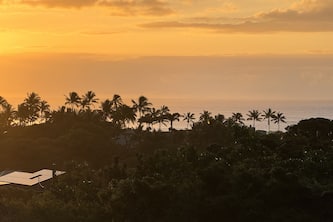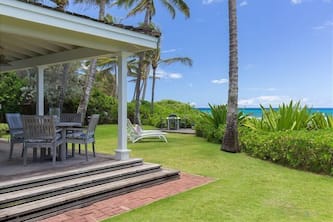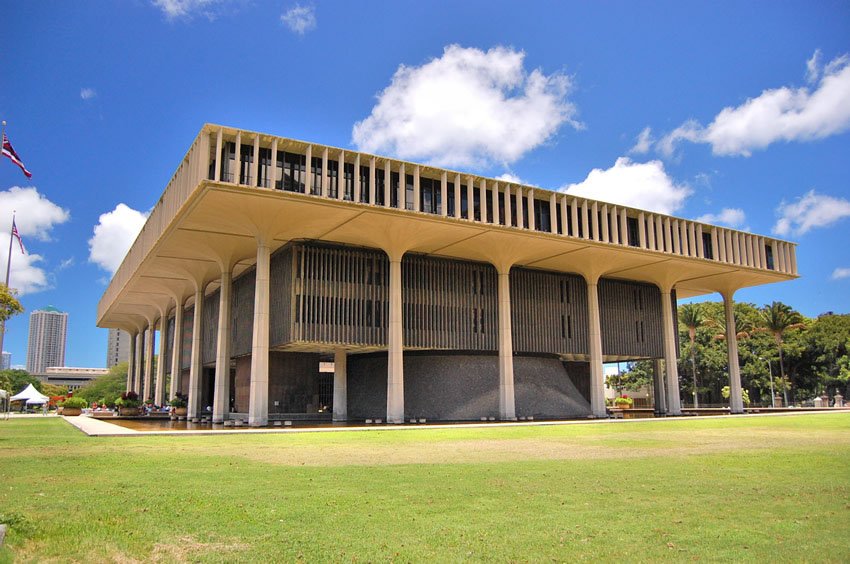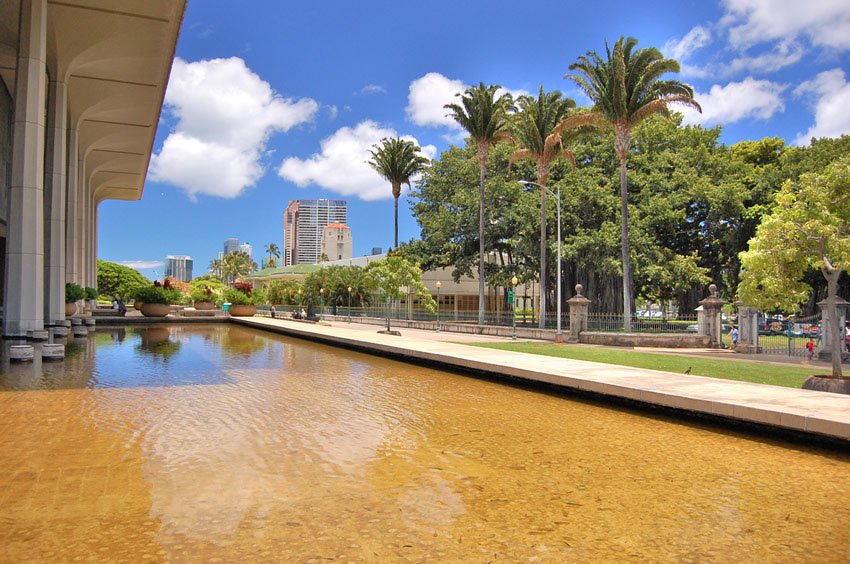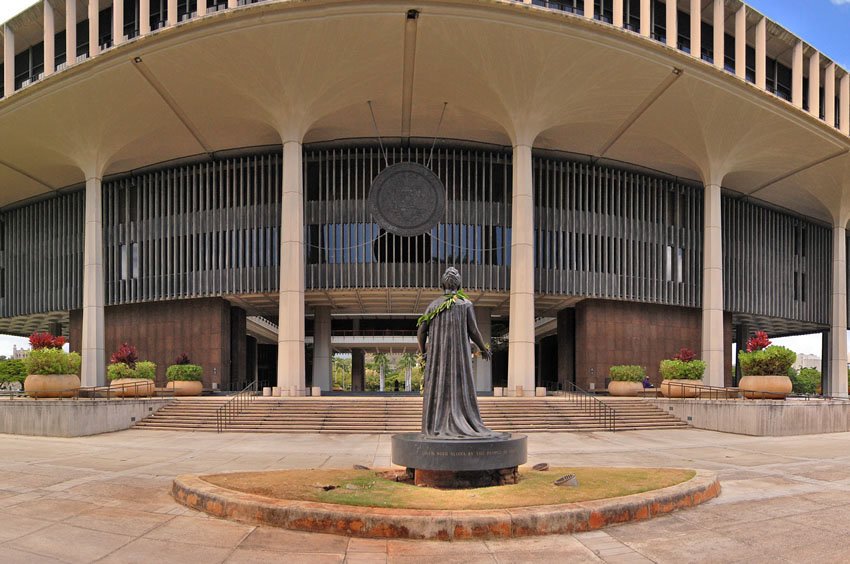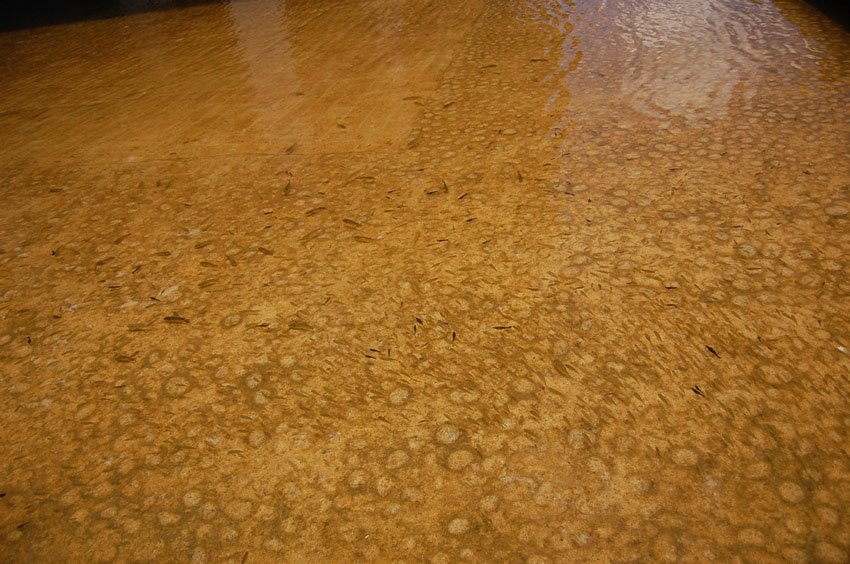Hawaii State Capitol
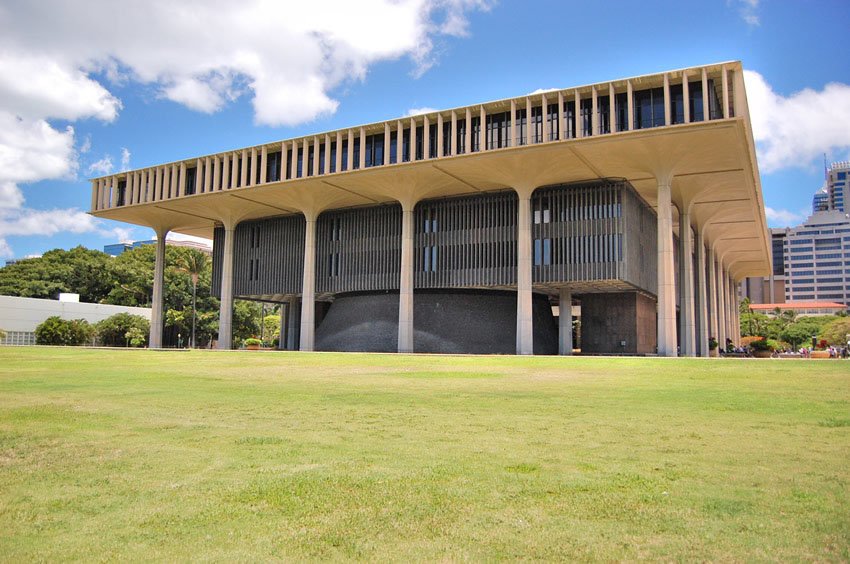
Hawaii State Capitol is the modern seat of government for the State of Hawaii, located in downtown Honolulu. Opened in 1969, its Bauhaus-inspired open-air design features symbolic elements like cone-shaped legislative chambers representing volcanoes and a surrounding pool symbolizing the Pacific Ocean. It stands as a unique example of Hawaiian international architecture.
Hawaii State Capitol, Oahu
Located in downtown Honolulu on the island of Oahu, the Hawaii State Capitol (view panorama) × was commissioned and dedicated by John A. Burns, second Governor of Hawaii. It opened on March 15, 1969, replacing the former statehouse, the Iolani Palace. The Hawaii State Legislature convenes in the building. The main tenants are the Governor of Hawaii and Lieutenant Governor of Hawaii, as well as all legislative offices.
Called Hawaiian international architecture, the Hawaii State Capitol is an American adaptation of the Bauhaus style. Unlike other state capitols that are modeled after the U.S. Capitol, Hawaii's capitol architectural features symbolize various natural aspects of Hawaii. For example, the whole building is surrounded by a reflecting pool, which symbolizes the Pacific Ocean. Also, the two legislative chambers are cone-shaped, representing the volcanoes that formed the Hawaiian Islands. The columns around the building's perimeter have coconut tree shapes. And the building was constructed in an open-air design, allowing sun, rain and wind to enter.
From the time the building was completed in 1969, the pool surrounding it has had an algae growth problem. The main reason is that brackish water from nearby wells feed the pool. The state has tried to remedy the problem by placing tilapia into the pool and installing an ozone treatment system. Some say that the algae growth has come to symbolize the pollution of the Pacific Ocean.
Key Features of the Hawaii State Capitol
- Opened in 1969: Replaced the historic Iolani Palace as Hawaii's statehouse.
- Architectural symbolism: Reflecting pool = Pacific Ocean; cone-shaped chambers = volcanoes; columns = coconut trees.
- Open-air design: Sunlight, rain, and wind enter the building's central atrium for natural ventilation and lighting (view panorama) × .
- Home of the Governor & Legislature: Hosts the State Legislature, Governor, and Lt. Governor's offices.
- Downtown Honolulu location: Walking distance from major historic sites including Iolani Palace and Kawaiahao Church.
Frequently Asked Questions
When was the Hawaii State Capitol built?
The building was completed and dedicated on March 15, 1969, under the leadership of Governor John A. Burns.
Why is the Capitol surrounded by water?
The reflecting pool symbolizes the Pacific Ocean that surrounds the Hawaiian Islands.
What do the cone-shaped chambers represent?
They represent the volcanoes that formed the Hawaiian Islands and are a key element of the building's symbolic architecture.
Where is it located?
The Capitol is located at 415 South Beretania Street in downtown Honolulu, close to Iolani Palace and Punchbowl Street.









